Lightcube (Photobox, Lightbox) do it yourself for 300r
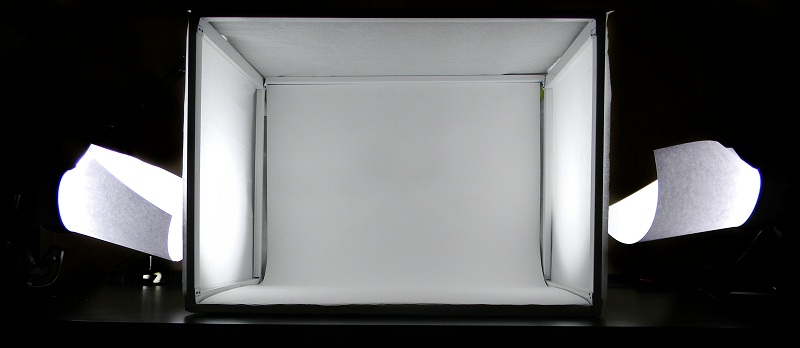
Suppose you want to make high-quality photos of a gadget for review or you are interested in subject shooting at home, but you can only get an inexpensive soap dish on hand. How to be You need a lightcube! About how I made my inexpensive but durable lightcube, examples of photos and much more - under the cut.
What is it?
A lightcube is a construction made of plastic / metal frames in the form of a cube, on the sides of which a translucent diffusing fabric is stretched. The bottom and back wall of such a cube are the "subject" table. It looks something like this:
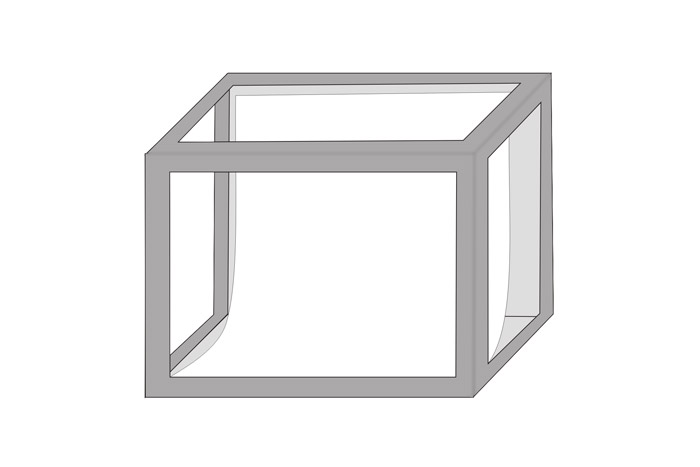
What for?
The reasons can be very different:
• I like photos on a white background
• I want to have my own “mini-studio”
• Interested in subject / macro photography
• Conditions in the apartment do not allow me to get high-quality photos
• I like working with
my hands I decided to take a lightbox because I wanted to get high-quality photos but in my apartment the conditions are completely unsuitable for this - it is “dark”, the sun practically does not fall into it. In room lighting, photos were rarely good. Lightbox solved all these problems.
Why exactly this?
There are many articles on the net about how to make your lightcube out of a cardboard box. And I had such a cube.
At first, I liked everything about him, but the minuses gradually began to appear: the speed of production negatively affects the life expectancy, the size of the light box is not enough (my last “cube” was 35 * 35 * 40 cm), the cardboard skeleton is easily damaged when replacing the “diffusers” "And the subject table (they break and get dirty with time).
Therefore, I decided to replace the skeleton of the “cube” with a stronger one, and make it the size I need, and not start from the size of the cardboard boxes I have.
Design
The idea to make a skeleton from a wire box came spontaneously while visiting a hardware store - for my “cube” I took 3 sticks 2 meters long.

To create a lightbox you will need
• Whatman
• A box for wires
• Corrugated paper
• Double-sided tape
• Small
nails Box ~ 160r, Whatman ~ 20r, Corrugated paper ~ 50r, Scotch ~ 40r, cloves ~ 30r. Total 300r.
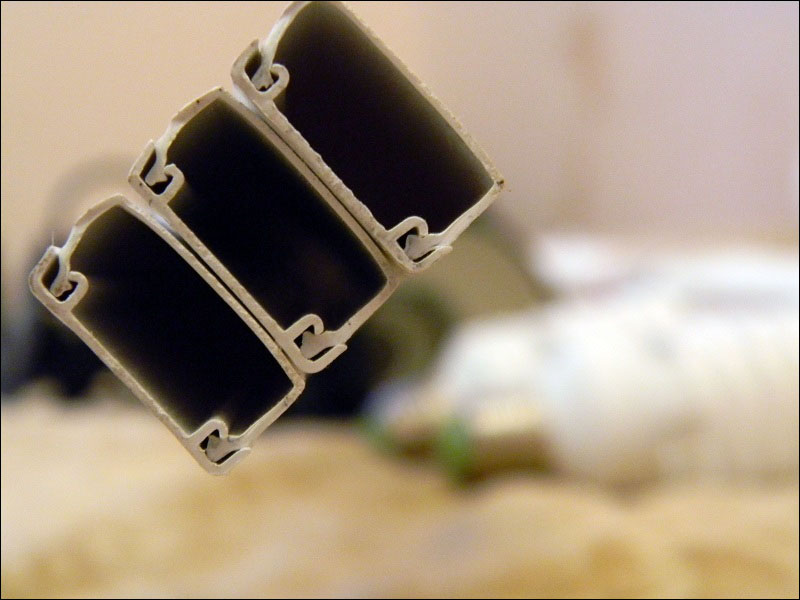
Shine
In the photo at the beginning of the last section you can see 2 lamps and 2 lamps. Before that I had a table lamp and a clothespin, but they had different socles. I decided to buy the second one of the same “clothespin” and take two energy-saving lamps - 23W (corresponding to 160W for an incandescent lamp), 4200K (bright white light). Such 2 lamps and 2 lamps will cost 800-900r.
Assembly
I’ll make a reservation right away - I do not pretend to be optimally designed, because how to connect the faces of the “cube” to each other I decided “on the go”. But what I got as a result, I liked it, and I decided to talk about it.
The boxes were cut as follows: 4 pieces of 50 cm and 8 pieces of 35 cm (it was these lightbox sizes that seemed optimal for use / storage):

In order to connect the “sticks” to each other, I used the feature of the boxes - a hollow design:
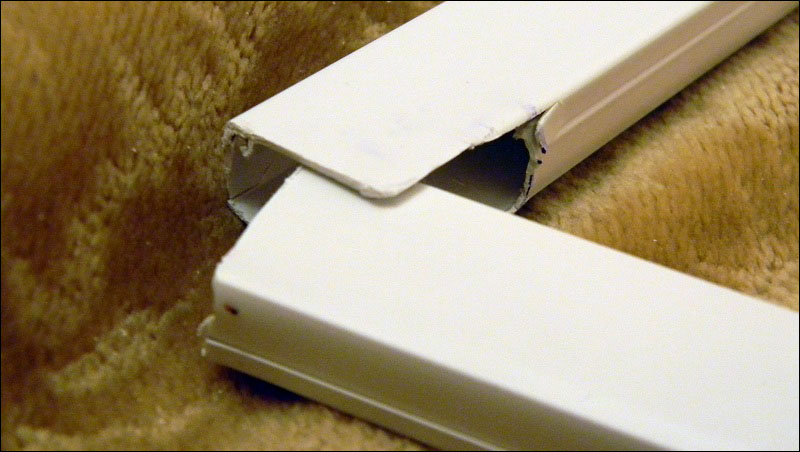
And the connection points fastened with small carnations:
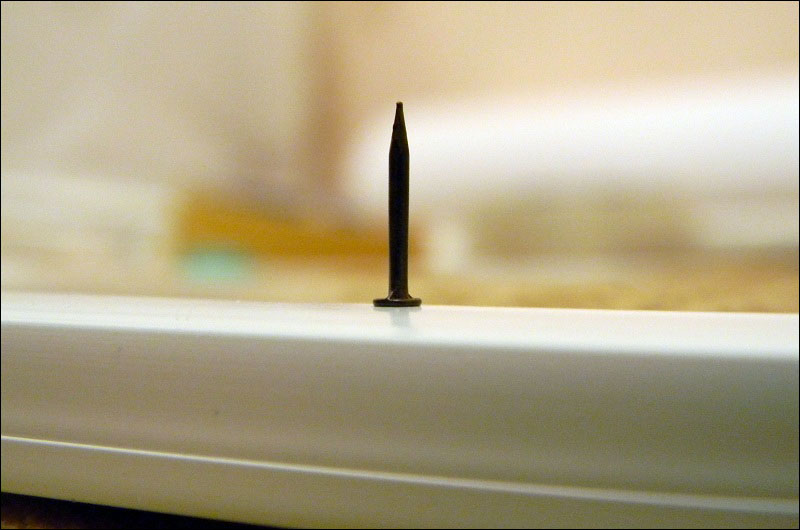
First, made the sides:
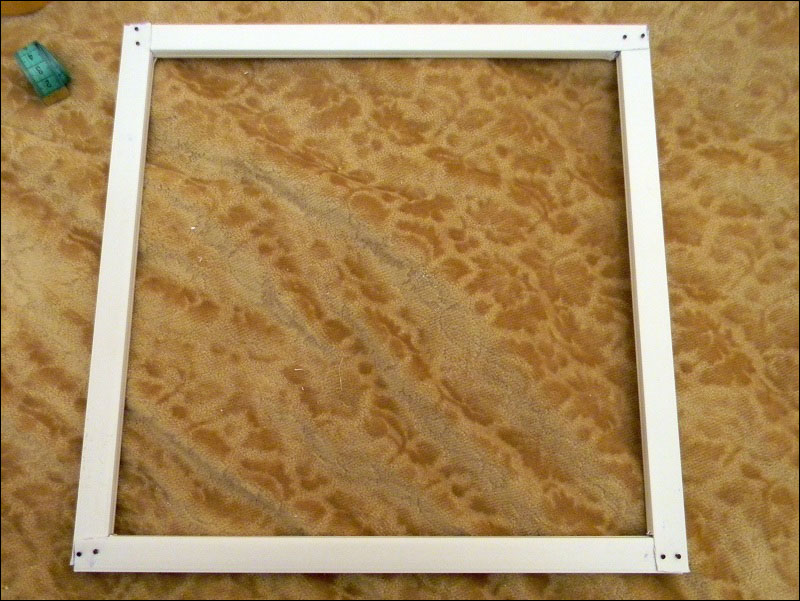
And then again used the hollow construction of the boxes for the construction of the base:

After some time, the skeleton was ready:

When I fastened all the sticks together and got a box, I decided to add two extensions to the back wall to increase strength and stability. He made stretch marks from the remaining parts. He also added one “rail” to the bottom, so that the future bottom of the cardboard does not sag down.
After I attached the bottom and pasted the paper (to make a “subject table”):

At the end I glued corrugated paper on the sides and on top of the lightbox:
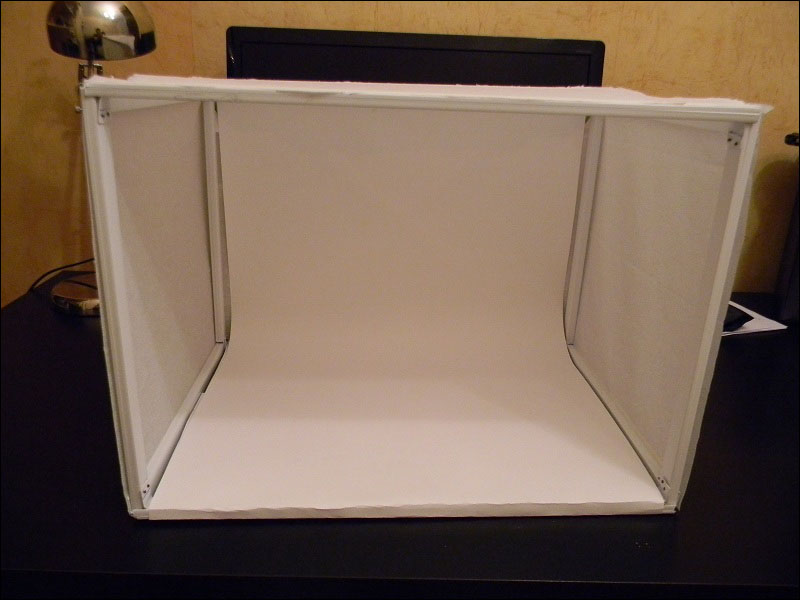

That's it, lightbox is ready. With its large size, the lightbox turned out to be durable - it does not stagger or bend. For the sake of the experiment, “accidentally” dropped the structure off the table a couple of times - the skeleton remained intact, even the paper on the sides did not have to be changed. And if the lightbox turned out to be quite durable with such dimensions, then if it were smaller, say 20x20x20cm, then it would be even stronger. And such a photo box is easy to make of the sizes that you want.
Result
Lightbox working condition:
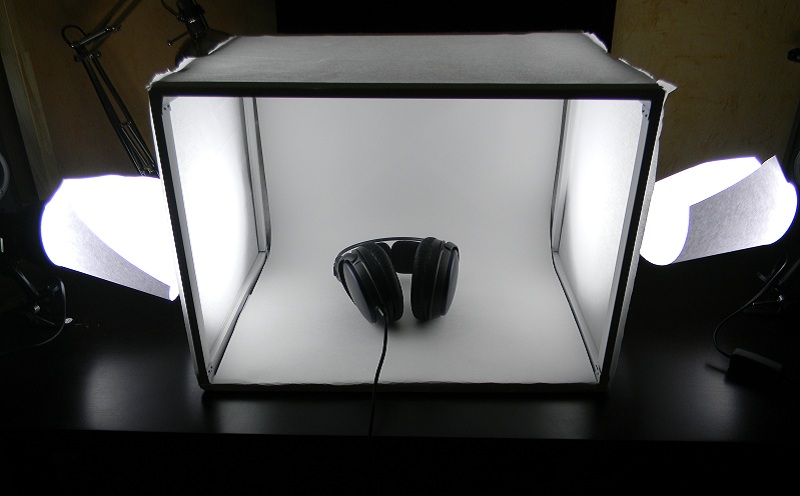
Purchased bulbs noticeably “crawl out” of the lamp housing, so I made a “continuation” of the paper housing to better focus the light on the lightbox, and also to prevent direct rays from getting into my eyes.
Examples of received photos
For a couple of years now, my camera has been the Nikon Coolpix L110 (budget hyperzoom). All pictures were taken using it.





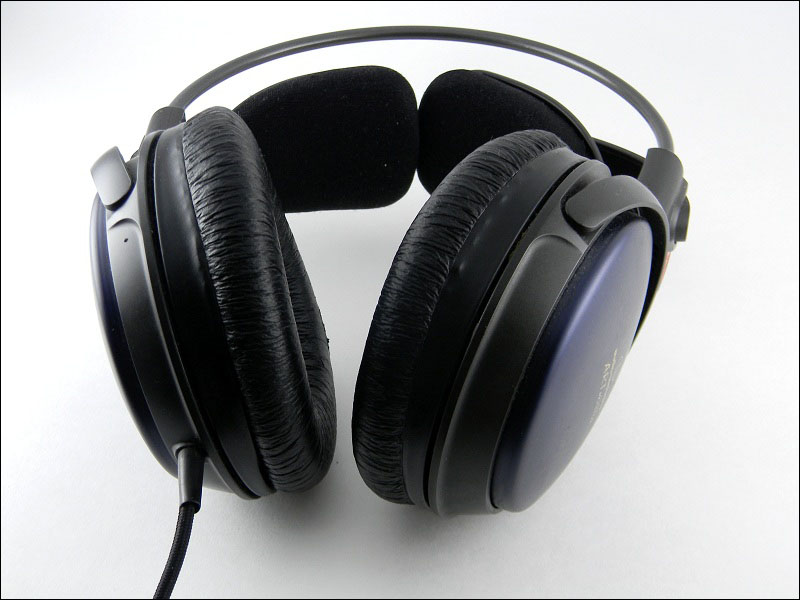








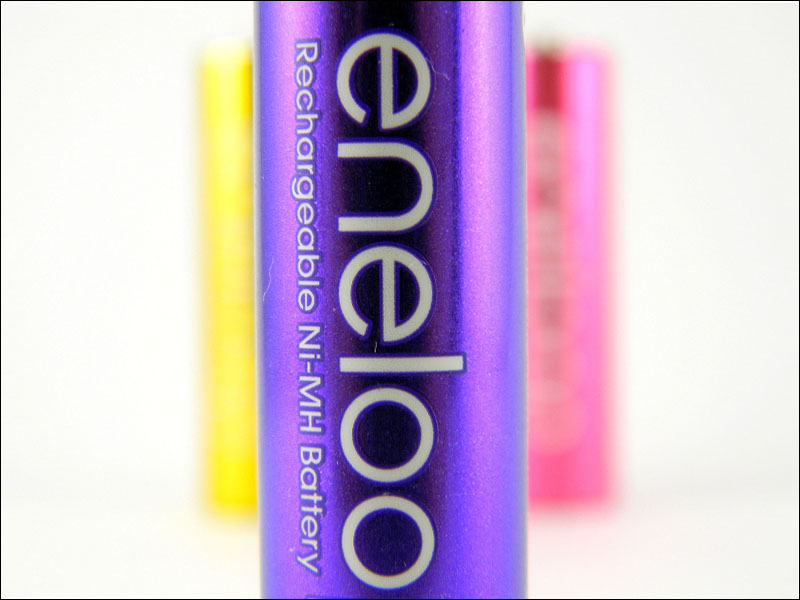
Total
It turned out an inexpensive, but durable lightbox, the price of which is only 300 rubles. I hope this article comes in handy for someone.
Good luck with your experiments!
